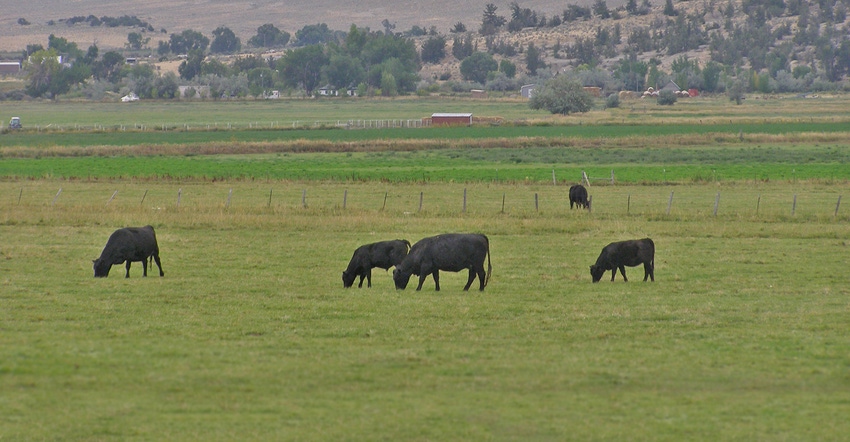September 26, 2017

Wyoming’s average farmland real estate value has remained flat since 2015, unlike the majority of states in the Western Farmer-Stockman coverage area — which have seen a boost in farmland value.
A variety of factors are likely contributing to the stagnant value of ranch and farmland in the state, according to a professor in the University of Wyoming’s Department of Agricultural and Applied Economics.
“But what is most likely driving this is the decline in net farm and ranch income that we have seen the last year, and this drop is projected to be more drastic this year,” says Chris Bastian. “While some ag commodity producers, such as dairy, are projected to see increases in net farm income, cattle and cow-calf operations are projected to see a continued drop in receipts as cattle prices continue to soften.”
As agricultural lands are an important factor in ag production, Bastian notes, “We very often see agricultural land values drop when ag income decreases. And given that Wyoming’s agricultural sector is heavily dependent on cattle, it is not overly surprising that this is having a dampening effect on land values in the state.”
The only other state in the Western Farmer-Stockman region that saw per-acre farm values remain flat was Nevada. Washington, Oregon, Idaho, Montana, Utah and Colorado saw values rise.
The highest farm real estate values in the country were in the Corn Belt states, which averaged $6,260 per acre; while the Mountain region, which includes Wyoming and seven other Western states, had the lowest average value at $1,130 per acre.
Cropland values
Turning to the average value of cropland, Wyoming’s figure stood at $1,350 per acre for 2017, according to the latest report from the USDA National Agricultural Statistics Service. This is down 1.5% from 2016.
The other states in the Western Farmer-Stockman region all saw a boost in per-acre cropland values.
They include Oregon, $2,860/acre, up 4.8% from 2016; Washington, $2,890, up 4.7%; Idaho, $3,400, up 3.0%; Utah, $3,420, up 2.4%; Montana, $1,020, up 1.0%; and Colorado, $1,920, up 0.5% (Nevada isn’t included in the cropland report).
“Cropland values for Idaho, Utah, Montana and Colorado are projected to be up slightly this year, which is counter to the projection for Wyoming,” Bastian says. “My thought on this is that crop agriculture in these four states tends to be a little more diverse, and so agricultural income is less dependent on cattle production than Wyoming.”
For example, he notes, “Idaho has a huge dairy sector, which is projected to see an increase in receipts and income, and it also has a lot of potato production.”
About the Author(s)
You May Also Like




